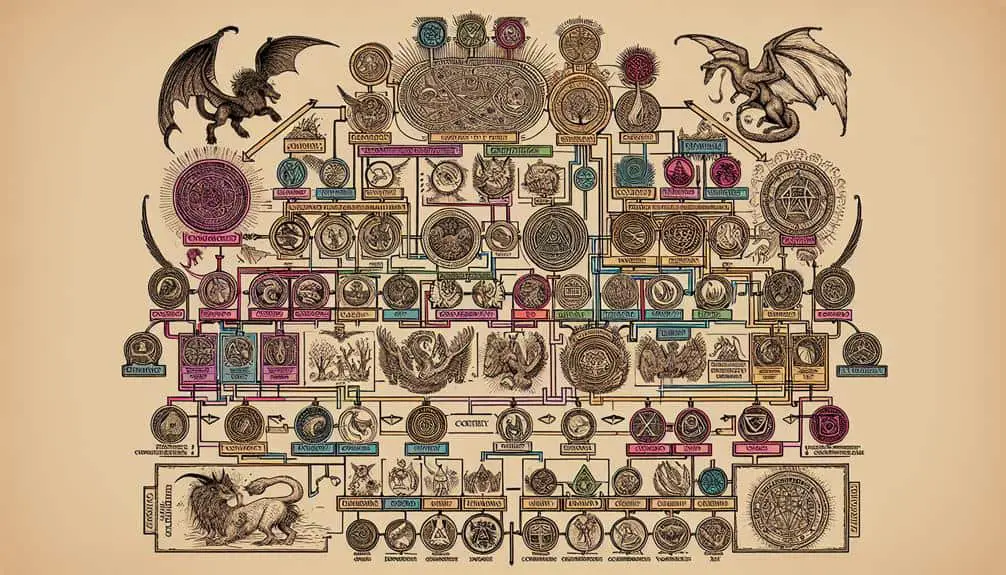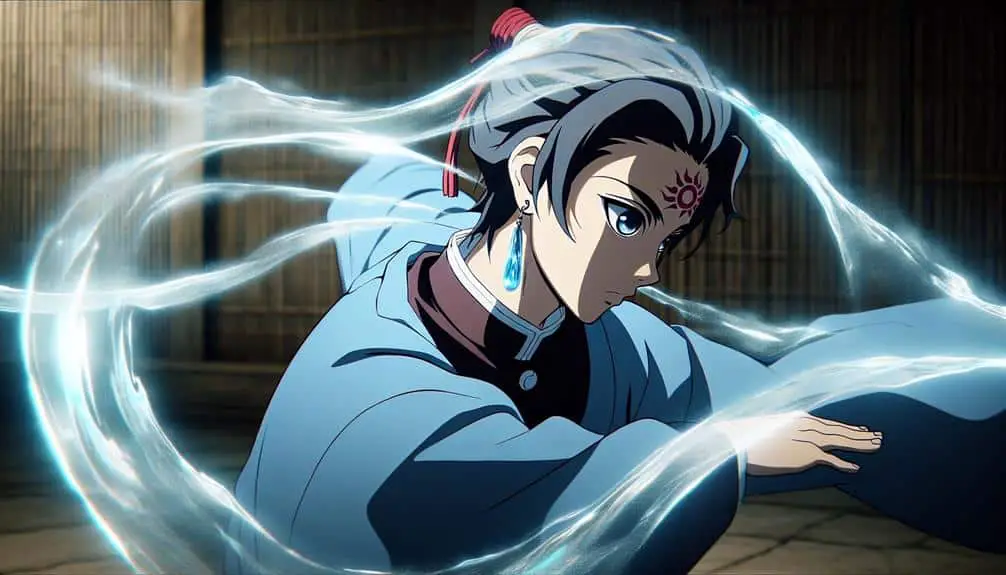The Demon Slayer Corps classifies demons to understand their strengths and weaknesses. This system helps you prepare for encounters by tailoring strategies based on demon behavior patterns. By categorizing demons, you gain insights into their abilities, guiding your combat techniques effectively. The classification system influences your attack planning to exploit demon vulnerabilities and maximize your chances of success. The Corps' ranking system signifies skill levels and motivates advancement. Understanding demon classifications enhances strategic capabilities in combat situations. If you want to enhance your demon-slaying skills, grasping these classifications is key to your success.
Key Points
- Understanding demon strengths and weaknesses for effective combat strategies.
- Tailoring hunting approaches based on demon behavior patterns.
- Guiding demon slayers in combat techniques and weapon choices.
- Exploiting demon vulnerabilities for tactical advantages during battles.
- Enhancing preparedness and strategic capabilities of demon slayers.
Origins of Demon Slayer Corps Classification
The classification system within the Demon Slayer Corps traces its origins back to the ancient teachings of the Breath Styles masters. Understanding demon origins and behavior is vital for a demon slayer's success. The classification system serves as a strategic tool to categorize demons based on their strengths, weaknesses, and unique abilities. By categorizing demons, slayers can prepare more effectively for encounters, knowing the specific traits and vulnerabilities of each classification.
Demon origins are shrouded in mystery, and the classification system seeks to shed light on these enigmatic beings. Through meticulous observation and analysis, the Demon Slayer Corps has identified distinct patterns in demon behavior and characteristics. This knowledge allows slayers to approach each demon encounter with a tailored strategy, maximizing their chances of victory.
In essence, the classification system is the cornerstone of the Demon Slayer Corps' efficiency and success. By delving into demon origins and developing a thorough classification system, slayers can navigate the dangerous world of demons with enhanced skill and precision.
Purpose of Demon Classification System
Within the realm of demon slaying, understanding the purpose behind categorizing demons is vital for maximizing efficiency and ensuring survival. The Demon Classification System serves as an important tool for demon slayers to comprehend the diverse behaviors exhibited by different demon types. By understanding behavior patterns, slayers can tailor their hunting strategies accordingly, increasing their chances of success while minimizing risks.
Each demon classification provides valuable insights into the strengths, weaknesses, and tendencies of a particular demon breed. This knowledge allows demon slayers to adapt their combat techniques and choose the most effective approach when facing different adversaries. For instance, knowing that certain demons are more vulnerable to sunlight or possess heightened senses can greatly influence how a slayer plans and executes their attacks.
Demon Slayer Corps Ranking System
Discussing the Demon Slayer Corps Ranking System sheds light on the hierarchical structure within the organization, guiding demon slayers on their path to mastery. The ranking system establishes a classification hierarchy that signifies a demon slayer's skill level and experience. By categorizing demon slayers into different ranks, such as Mizunoto, Mizunoe, and Kanoto, the Corps guarantees a clear understanding of each member's capabilities and responsibilities.
Each rank signifies a demon slayer's progress and proficiency in combating demon targets, which range from lower-level demons to powerful demons among the Twelve Kizuki. This system not only aids in organizing and coordinating demon slayers during missions but also serves as a motivating factor for individuals to aim for advancement and improvement.
Understanding the Demon Slayer Corps Ranking System is vital for demon slayers aiming to climb the ranks and contribute effectively to the Corps' mission of eradicating demons. It provides a clear roadmap for demon slayers to hone their skills, tackle increasingly challenging demon targets, and ultimately ascend towards the pinnacle of mastery within the organization.
Impact of Demon Classification on Tactics
Demon Slayer Corps members leverage demon classification to adapt their tactical approach based on the specific strengths and weaknesses of their adversaries. By conducting in-depth demon behavior analysis, Slayers can gain valuable insights into how different demons behave, their vulnerabilities, and the most effective ways to defeat them. This knowledge allows the Corps to strategize and exploit tactical advantages during combat situations.
Understanding the classification of demons enables Slayers to tailor their fighting style, weapon choice, and battle plan to counteract the unique abilities possessed by each demon type. For example, if facing a demon known for its incredible speed but lacking in physical strength, Slayers may opt for swift, precise strikes to exploit this weakness. On the other hand, when confronting a demon with formidable defensive capabilities, Slayers might focus on overwhelming offensive strategies to break through their defenses.
In essence, demon classification serves as a pivotal tool for the Demon Slayer Corps, empowering its members to approach battles strategically and maximize their chances of victory.
Evolution of Demon Classification Techniques
The evolution of techniques for classifying demons has greatly enhanced the Demon Slayer Corps' strategic capabilities in combat scenarios. This advancement has allowed for more efficient identification and analysis of demon abilities, leading to better-prepared demon slayers. Here are three key ways in which demon classification techniques have evolved:
- Specialized Sensor Tools: Technological advancements have led to the development of specialized sensor tools that can detect and analyze unique demon signatures. These tools provide vital information about a demon's strength, weaknesses, and behavior patterns.
- Research on Demon Biology: Through extensive research on demon biology, including studies on demon anatomy and physiology, demon slayers have gained a deeper understanding of how demons function. This knowledge has enabled them to exploit vulnerabilities more effectively during combat.
- Training Programs: The evolution of demon classification techniques has also influenced training programs within the Demon Slayer Corps. Demon slayers now undergo rigorous training on utilizing the latest classification tools and interpreting data to make informed decisions in battle.




